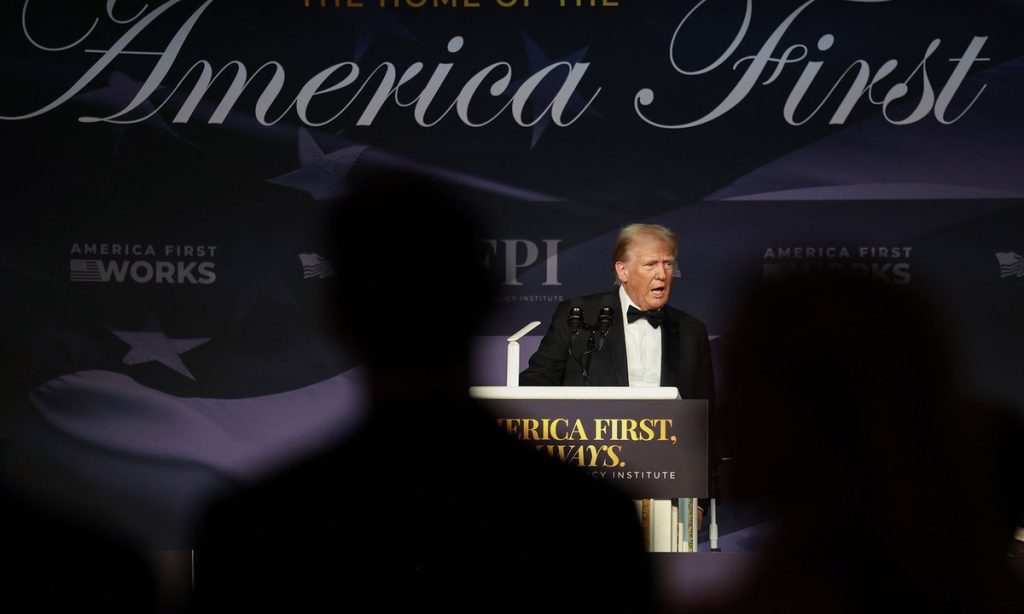
Although an avalanche of anxiety has already been triggered by the imminent return of once-and-again US president-elect Donald J. Trump, to date much of the resulting discussion within the art trade has concentrated on only two subjects: how to brace for the impact of the stiff tariffs he is threatening to impose, and why his administration’s tax policies could unleash a surge of pent-up spending among wealthy American buyers. Far less has been said about the high degree of disorder that commercial galleries and artists will face because of those outcomes, let alone how they might respond to it in pragmatic ways.
I speak with a number of people on the collector side that feel like there are gallerists who treat them differently when things are really booming versus when things are slowing
Nick Olney, president of Kasmin Gallery, New York
Some valuable perspective on these latter issues emerged from a panel discussion on the final day of ArtLogic’s Connect ’24 conference this past November. Titled “Beyond Election Day: Macro Challenges Facing the Art Market in 2025” (and moderated by this writer), the conversation foregrounded practical solutions put forth by a trio of dealers with deep experience in different commercial tiers and regional markets. None would say they have all the answers, but their suggestions open up a useful new lane in a gridlocked discourse.
Forced perspective
The first takeaway from the panellists was counterintuitive: weathering chaos can lead to “extreme clarity about your mission statement and who you serve”, says Katey Acquaro, the director of the Manila-headquartered Silverlens gallery’s space in New York.
The leaders of Silverlens found what Acquaro calls “a guiding light” by identifying the specific audiences who resonated with their programme even amid the extreme turbulence of 2020, a year that combined Trump’s tumultuous governance, the Covid-19 lockdowns and the Black Lives Matter uprisings. The four core demographics that emerged, she says, were the gallery’s existing clients, members of the Asian diaspora who “are looking for a portal back to home or ancestral home in the region”, large institutions with either the beginnings of Asian art collections or curators specialising in the region and university museums actively “trying to make their collections reflect their student body”. Crucially, this quartet has remained Silverlens’s focus ever since.
Nick Olney, the president of Kasmin Gallery in New York, broadly echoed this thinking. In addition to the external pressures mentioned above, he says, 2020 was also the year that Paul Kasmin, the gallery’s founder, died aged 60. Aside from a change in the dealership’s executive structure, this internal rupture necessitated “a lot of really amazing, frank conversations with our artists and with the team about what our values are, what our mission is, why we’re doing this”, Olney says.
These discussions proved crucial in positioning Kasmin gallery to reach a new level of success in the years after. Yet actualising them has required him and his colleagues to constantly negotiate “what you pull forward from that time and the clarity you had versus this elastic snapping back to the pace of art fairs, exhibitions, etc”. In short, the insights one gains in the storm are only as valuable as one’s commitment to honouring them after it passes.
Gallerists can strengthen their hand in the four years ahead by breaking away from a few of their peers’ and predecessors’ standard approaches, too. Trump’s isolationist agenda, ironically, could (and should) mirror back the geographical biases that the art trade itself indulges. “America can be really regional in itself—New York can be really myopic,” says Jasmin Tsou, a director at Lisson gallery’s New York location and the former owner of the tastemaking JTT gallery, which closed in 2023. One important part of JTT’s 11-year story, she adds, was its engagement with other US cities boasting exciting artists and great institutions, including Philadelphia and Chicago, “that you wouldn’t really know if you just stayed in New York”.
Amid choppy trade conditions like the ones Trump’s return to the White House could trigger, another vital distinction for dealers can be maintaining a consistent—and consistently personal—dialogue with buyers. “I speak with a number of people on the collector side that feel like there are gallerists who treat them differently when things are really booming versus when things are slowing,” Olney says. He cautions against relying on email and text exchanges to keep clients close; far better to humanise relationships via phone calls, Zoom catch-ups or in-person meetings regardless of whether the art market is trending bullish or bearish. The goal, Olney adds, “is to treat people well in every aspect of the business and at every time frame”.
Don’t neglect artist relationships
Dealers would be well served to apply this commonsense principle within their programmes, too. Although relationships with collectors often monopolise conversations about navigating various trade conditions, the relationships between gallerists and the artists they work with are just as important. This is especially true when difficult times call for chancier decisions about what, when or how a gallery shows. “I really respect and value dealers who can figure out how to make bold moves with their programme while not bringing the risk into the lives of the artists and their staff,” Tsou says.
From Acquaro’s perspective, one way to counter rising uncertainty outside the gallery’s walls is to provide greater certainty within them via written agreements. “As artists need more support and as the galleries need to step in to provide more support on a variety of levels, contracts become really important, because that just clarifies what everybody will give everybody [else],” she says. “It’s a method of protection to clarify the terms and preserve the relationship long term as well.”
To prepare for the unpredictability of a second Trump administration, however, maximising optionality may be more beneficial to dealers than adopting any specific policy or perspective. “One of the things strategically that we think about is how to be the most adaptable,” Olney says. “The programme has always been—and really this is based on intellectual curiosity—a number of artists who are active in different markets, artists at different stages of their careers and based in different places, too.” He adds that the goal for Kasmin is “to maintain that complexity while also being really decisive about what you’re doing and what you want to do”. Those are words to live by no matter what lies ahead.





